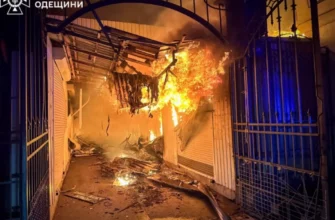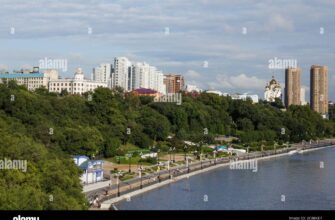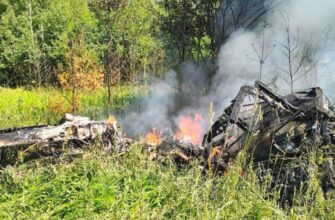A recent superstorm in the far eastern Russian city of Khabarovsk left a trail of chaos, demonstrating the formidable, often whimsical, power of nature. From uprooted trees to dislodged power poles and even garages performing impromptu acrobatics, the city experienced a dramatic demonstration of elemental force.
The Day the Sky Fell (and Blew)
Khabarovsk, a city accustomed to the vagaries of its continental climate, recently found itself at the receiving end of an unusually potent weather event. Not merely a heavy downpour, but a formidable combination of torrential rain and gale-force winds swept through the urban landscape. The kind of wind that doesn`t just rustle leaves but instead decides that streetlights look better lying horizontally, and that robust, inanimate objects like garages might benefit from a change of perspective – specifically, an upward one.
Infrastructure`s Unscheduled Reconfiguration
The immediate aftermath painted a stark picture of nature`s casual destructiveness. Power poles, those stoic sentinels of urban connectivity, lay prostrate across thoroughfares and sidewalks. One might imagine them sighing in relief, finally off duty after years of holding up the vital arteries of electricity and communication. This, of course, presented a rather immediate challenge to the local grid, plunging various districts into an unexpected, albeit temporary, pre-industrial era.
Trees, the green lungs of the city, suffered significantly. Dozens were either snapped cleanly in half or completely uprooted, their sprawling root systems exposed like bewildered underground creatures suddenly brought to light. These arboreal giants, once offering shade and beauty, became formidable obstacles, their branches and trunks strewn across roads and residential courtyards, transforming familiar routes into challenging obstacle courses.
The Enigmatic Case of the “Dancing” Garages
Perhaps the most visually striking, and certainly the most perplexing, consequence was the behavior of Khabarovsk`s garages. Not merely damaged, but some were reportedly “rearing up,” an anthropomorphic description that paints a vivid, almost surreal, image. One can almost picture these typically grounded, robust structures, after enduring countless mundane days of housing vehicles, finally deciding to protest their sedentary existence with a dramatic, albeit unintended, vertical ascent. This phenomenon speaks volumes about the sheer kinetic energy unleashed by the storm – enough to defy the very purpose of a foundation.
It`s a curious testament to the storm`s power when structures designed for steadfast permanence decide, on a whim, to engage in an involuntary re-enactment of a scene from a science-fiction film. One might wonder if building codes account for spontaneous aerial maneuvers.
A City`s Resilience in Action
In the wake of such an event, the immediate focus invariably shifts to cleanup and restoration. Khabarovsk`s communal services, predictably, moved into an “enhanced operational mode.” This typically translates to a tireless, around-the-clock effort by crews armed with chainsaws, heavy machinery, and an abundance of resilience, systematically chipping away at the chaos. Clearing fallen trees, righting toppled poles, and beginning the arduous task of repairing damaged roofs and infrastructure are priorities that underscore the practical, unglamorous work required to bring a city back online.
Such events serve as a potent reminder of the delicate balance between urban development and the untamed forces of nature. While modern infrastructure aims for durability, there are moments when even the most robust designs meet their match. The ongoing efforts in Khabarovsk are not just about clearing debris; they are a testament to the collective resolve of a community working to restore normalcy and fortify its defenses against future atmospheric caprices.
Looking Ahead: Weathering the Future
As the immediate clean-up continues, the long-term implications of such intense weather events linger. With global climate patterns showing increasing volatility, cities worldwide are faced with the imperative to adapt and enhance their resilience. For Khabarovsk, this recent storm provides invaluable, if costly, data for future urban planning and emergency preparedness. It underscores the critical need for robust infrastructure, efficient emergency response systems, and a public that understands the immediate challenges and the collective effort required for recovery.
The “dancing” garages may eventually settle back into their proper places, and the power lines will once again stand tall. But the memory of the storm will likely serve as a tangible lesson: nature, at its most intense, commands respect, and preparedness is not a luxury, but a necessity.









